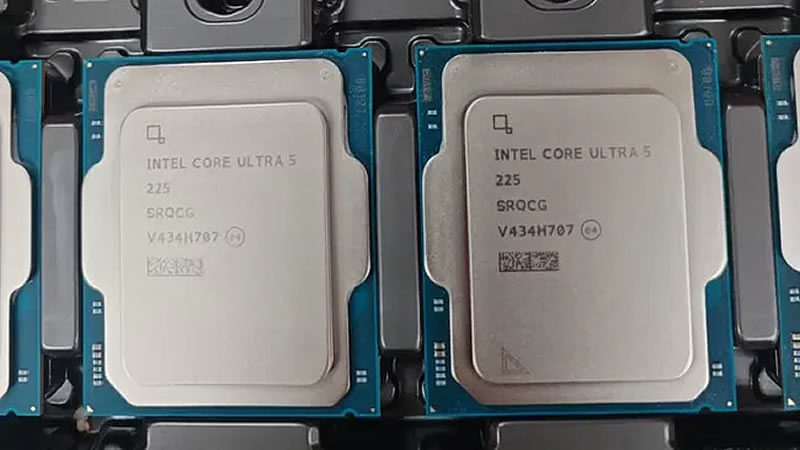The first images of the new budget Intel Core Ultra 200 series processors based on the Arrow Lake architecture have leaked online, which, as it turns out, have a smaller integrated heat spreader (IHS) compared to more powerful chips in the same series. Presumably, this may affect compatibility with cooling systems.

The main difference between the new models is the size of the heat spreader. The IHS of the Core Ultra 5 245 and 225 models is noticeably lower than that of the Core Ultra 5 285 and Ultra 265 and other processors released earlier. In particular, the height of the part in contact with the cooler has been reduced, especially in the upper part of the chip. At the same time, the edge of the IHS, which is located under the mounting frame on the motherboard, has become larger, although the total surface area of the IHS remains approximately the same as the original heat spreader.
Changing the IHS size may affect the compatibility of new processors with LGA 1851 motherboards. Although the Core Ultra 5 245 and Core Ultra 5 225 models are compatible with the LGA 1851 socket, the mounting frame around it was designed to match the original heat spreader. It is unclear whether there will be any problems with installing processors with reduced IHS.
Another detail was the difference in processor labeling. The Core Ultra 245 and Ultra 225 models have a heat spreader code that begins with a “V” rather than an “L” like the original IHS models, including the yet-to-be-released Core Ultra 285 and 265. The “L” code indicates Ireland, and “V” is for Vietnam. It appears that Intel is using two different production lines to create chips with different IHSs: the larger ones are produced in Ireland, and the chips with reduced IHS (currently only Core Ultra 245 and 225) are produced in Vietnam.
However, based on screenshots of the CPU-Z utility published on Taobao, we can conclude that, despite the differences in the heat spreader and production location, these processors belong to the same generation and have a similar architecture.
The official reasons for the differences in the IHS design are not yet known, but Intel is expected to reveal more information at the upcoming CES 2025, which takes place next week.